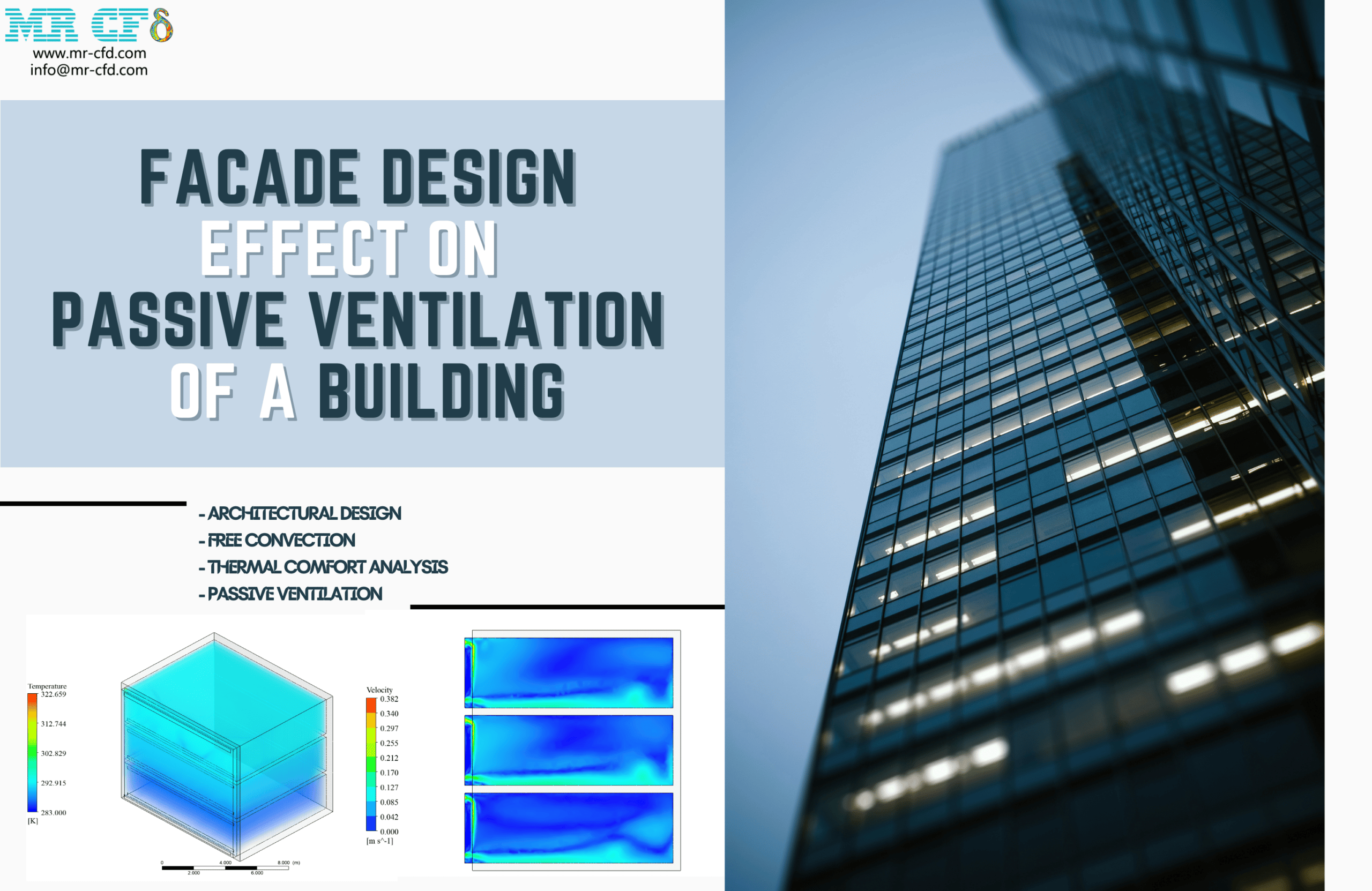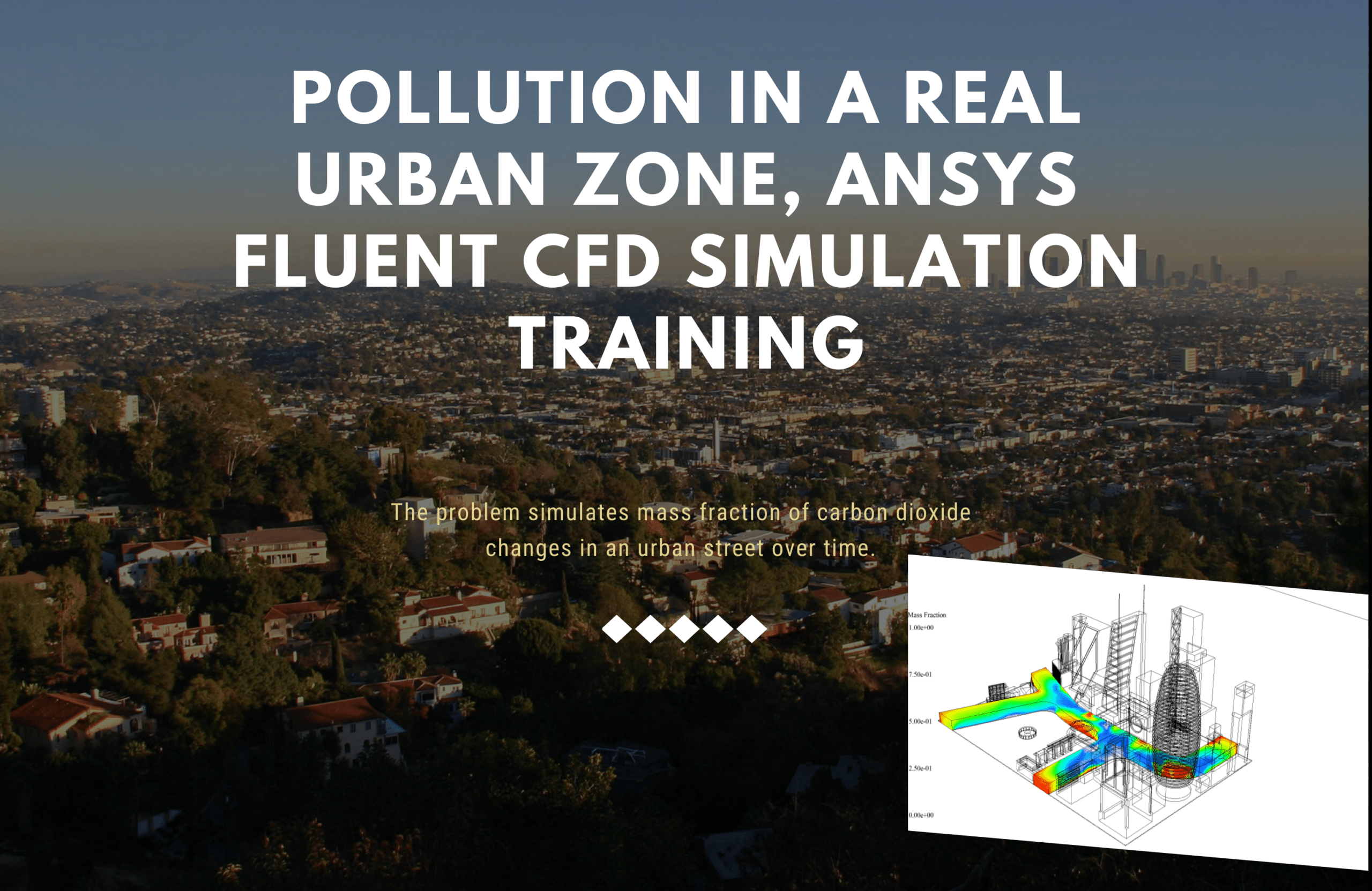Solar Chimney for a Room HVAC, CFD Simulation Tutorial
$100.00 $50.00 Student Discount
- The problem is simulating the HVAC inside the room using a solar chimney by ANSYS Fluent software.
- The 2-ِD geometry of the present model is carried out using Design Modeler software.
- The meshing of the present model has been done using ANSYS Meshing software. The mesh type is structured and the element number is 42846.
- The Buoyancy effect plays the main role in the room HVAC. Convection heat transfer is applied.
To Order Your Project or benefit from a CFD consultation, contact our experts via email (info@mr-cfd.com), online support tab, or WhatsApp at +44 7443 197273.
There are some Free Products to check our service quality.
If you want the training video in another language instead of English, ask it via info@mr-cfd.com after you buy the product.
Description
Description
The problem is simulating the HVAC inside the room considering a solar chimney by ANSYS Fluent software. The present model consists of two main parts, including the interior of the room and a sloping solar chimney on the room’s ceiling.
The solar chimney consists of glass plates on its side surfaces that are in contact with the environment. As a transparent medium, it receives solar energy and has a plate on its back as a heat-absorbing surface. It is assumed that the adsorbent surface behind the chimney has a constant temperature of 335.15 K.
In contrast, the glass surface in contact with the external environment has convective heat transfer with its surroundings. The ambient air temperature is 308.15 K, and the convection heat transfer coefficient is 8 W/m2K.
It is also assumed that the heat received from sunlight inside the chimney creates a constant heat source inside the chimney, equivalent to 15000 W/m3.
Solar Chimney Methodology
The 2-D geometry of the present model is carried out using Design Modeler software. The model’s geometry consists of two parts, including a room measuring 2 m⨯3 m and a solar chimney with a length of 2 m, a slope of 45 degrees to the room’s ceiling and a width of 0.15 m.
The meshing of the present model has been done using ANSYS Meshing software. The mesh type is structured, and the element number is 42846.
Solar Chimney Conclusion
After the solution process is completed, two-dimensional contours of pressure, temperature, and velocity, as well as pathlines and velocity vectors, are obtained.
Also, the diagram of temperature distribution in the transverse direction at a point in the middle of the solar chimney (at a distance of 1 meter from the inlet and outlet) and the graph of velocity changes in the transverse direction in the chimney outlet section is obtained.
The airflow from the inlet section at the bottom of the room has a pressure-inlet boundary condition; In this way, this incoming airflow at a temperature of 308.15 K is sucked into the room by the heat of the solar chimney and is transferred to the environment outside the room.
The temperature profile at a point in the solar chimney at a distance of 1 m from the chimney inlet with a thickness of 0.15 m has been obtained and compared with the temperature profile of the same case in a paper.












Alberta Lehner –
This training is very comprehensive, complete, excellent, and unique. I suggest to all my friends not to miss this training.
Scottie Botsford –
The intricacy in your simulations is commendable. Great job!
MR CFD Support –
Thank you for your compliment! We always aim to provide the most accurate and detailed simulations possible.
Alexandre Marvin –
Why do you prefer Design Modeler and ANSYS Meshing for your simulations?
MR CFD Support –
These tools offer advanced capabilities for creating high-quality models and precise meshes, which are essential for accurate CFD simulations.
Jackie Schroeder –
I have a specific simulation in mind. Can you cater to my request?
MR CFD Support –
Absolutely! We are open to contributions and would be happy to create a custom simulation for you. Please share more details about it.
Mollie Dicki –
It was good. thank you.
Dr. Sophie Crooks I –
I am thoroughly impressed by the detail in the Solar Chimney for a Room HVAC CFD Simulation Tutorial. The methodology is well-explained, and the results seem invaluable for understanding the HVAC design’s effectiveness. The use of a solar chimney for sustainable heating is intriguing, and it’s great that the tutorial provides temperature and airflow patterns within the system.
MR CFD Support –
Thank you for the kind words! We are delighted to hear that you found the Solar Chimney CFD Simulation Tutorial comprehensive and helpful. It’s great that the detail provided contributes to a better understanding of sustainable heating systems. We appreciate your feedback and are pleased that the tutorial meets your expectations.
Dr. Jaylon Howell V –
The tutorial was very informative, but I am wondering if any turbulence model was used for the HVAC simulation and, if so, how the selection was made for this particular case.
MR CFD Support –
In the HVAC simulation for the solar chimney problem, a turbulence model would typically be used to accurately account for the effects of turbulence in airflow and heat transfer. Common choices in such applications include the k-epsilon model, k-omega model, or the SST (Shear Stress Transport) k-omega model. The choice of the turbulence model will depend on the specific flow characteristics of the room and the solar chimney, such as the Reynold’s number, nature of the flow (laminar or turbulent), and the simulation’s computational requirements. A proper turbulence model ensures a balance between accuracy and computational efficiency.
Prof. Moses Osinski V –
Can you explain how the airflow is driven through the room by the solar chimney?
MR CFD Support –
In the simulation, the solar chimney uses the heat absorbed from the solar energy to create a buoyancy-driven airflow. This hot air in the chimney rises due to its lower density compared to the cooler air in the room, creating an upward draft. Cooler air from the room is drawn in at the bottom to replace the rising hot air, which helps circulate air through the room. This is how the natural ventilation process is induced by the solar chimney effect.
Mrs. Eldora Hahn V –
The results you’ve mentioned are intriguing. I’m curious, though, what was the range of the temperature at different points on the graph?
MR CFD Support –
In our tutorial, we have detailed graphical presentations of temperature distribution. The temperature ranges at different points show how effectively the solar chimney circulates air and maintains thermal comfort within the room. Our simulation results provide insight into how temperature gradients are established within the system, and users can see precisely how temperatures vary at multiple points in the room and the chimney.
Dr. Brody Lind –
I’ve learned so much from this solar chimney HVAC tutorial! I can really see the balance between the room’s air circulation and the solar chimney’s effect, helping to demystify the entire process. The temperature distributions and velocity profiles were particularly eye-opening.
MR CFD Support –
Thank you for your uplifting feedback! We’re absolutely thrilled to hear that our tutorial has greatly enhanced your understanding of HVAC systems utilizing solar chimneys. Knowing that you’ve appreciated the insights on air circulation and temperature dynamics truly makes our efforts worthwhile. If there’s anything more you wish to explore or learn with us, just let us know. Your success with our learning products is our top priority!
Dr. Adam Borer –
Fantastic tutorial! The combination of theory and hands-on CFD simulation steps for the solar chimney HVAC system provided a solid understanding of the concepts and made implementation really smooth.
MR CFD Support –
Thank you so much for your kind words! We’re thrilled to hear that our tutorial on the Solar Chimney for a Room HVAC was helpful to you. If you have other learning needs or want to tackle more complex simulations, remember that we are here to help. Keep enjoying your journey into CFD with MR CFD!
Telly Kirlin –
The simulation sounds sophisticated! The inclusion of solar energy as a constant heat source inside the chimney is an exciting approach. Did you also visualize the temperature distribution at different times of the day or just at the peak sunlight hours?
MR CFD Support –
Thank you for your positive feedback! The simulation provided in the tutorial accounts for a constant heat source equivalent to the absorption of peak sunlight hours to effectively illustrate the function of the solar chimney; however, it does not include a time-varying analysis of the temperature distribution throughout different times of the day.
Jakayla Dach DDS –
I’ve just completed the CFD simulation tutorial for the Solar Chimney for a Room HVAC and I am impressed by how detailed and well-structured the process was laid out in the lesson. The step-by-step approach was very informative and it made understanding the nuances of thermal and fluid flow within the environment of a solar chimney very accessible.
MR CFD Support –
Thank you for your positive feedback! We’re thrilled to hear that you found the tutorial detailed and instructive. It’s our goal to ensure our users have a clear and comprehensive learning experience with our CFD simulation tutorials. If you have any more thoughts or need further assistance, feel free to reach out. Happy simulating!
Claudie Keeling –
I just finished the CFD Simulation Tutorial on the Solar Chimney for Room HVAC using ANSYS Fluent, and I must say it was very well-structured. As someone keen to understand how natural ventilation is improved with solar chimneys, the tutorial offered practical insights and the step-by-step illustration of setting up the model in ANSYS Fluent is commendable.
MR CFD Support –
Thank you for your positive feedback! We’re thrilled to hear that you found the tutorial well-structured and helpful. It’s always rewarding to know that our materials provide value and advance the understanding of our customers. We appreciate you taking the time to share your experience, and we hope you continue to find our tutorials and learning products beneficial.
Erin Veum –
I’ve been studying the details of the solar chimney for a room HVAC. The simulation seems comprehensive, but I’m curious, how did the actual performance results compare with the temperature profile that was cited from a paper? Was the simulation able to replicate the real-world results accurately?
MR CFD Support –
Indeed, the performance results of our solar chimney simulation were compared with those from an external academic source. Our results showed good agreement with the temperature profile reported in the literature, demonstrating the accuracy and reliability of our simulation model in predicting real-world scenarios.
Dr. Frederique Wolf –
This tutorial seems very comprehensive! The detailed breakdown of the boundary conditions and the expected outcomes solidifies my understanding of the simulation process. Thank you for such an educational guide on utilizing the Solar Chimney for room HVAC system optimization!
MR CFD Support –
We’re thrilled to hear that you found the tutorial thorough and helpful! Our goal is to provide clear and detailed guidance to support your learning and application of CFD simulations. If you have any more questions or require further assistance, don’t hesitate to ask. Thank you for your feedback!
Jerod Frami –
I am thoroughly impressed with the Solar Chimney HVAC simulation. It efficiently blends green technology in room ventilation and uses detailed analytics. The balance of theoretical concepts with practical application is outstanding.
MR CFD Support –
Thank you so much for your kind words. We’re thrilled to hear that our Solar Chimney for a Room HVAC CFD Simulation Tutorial met your expectations and that you appreciated the blend of sustainable technology with comprehensive analysis. If you need further assistance or have any questions in the future, feel free to reach out.